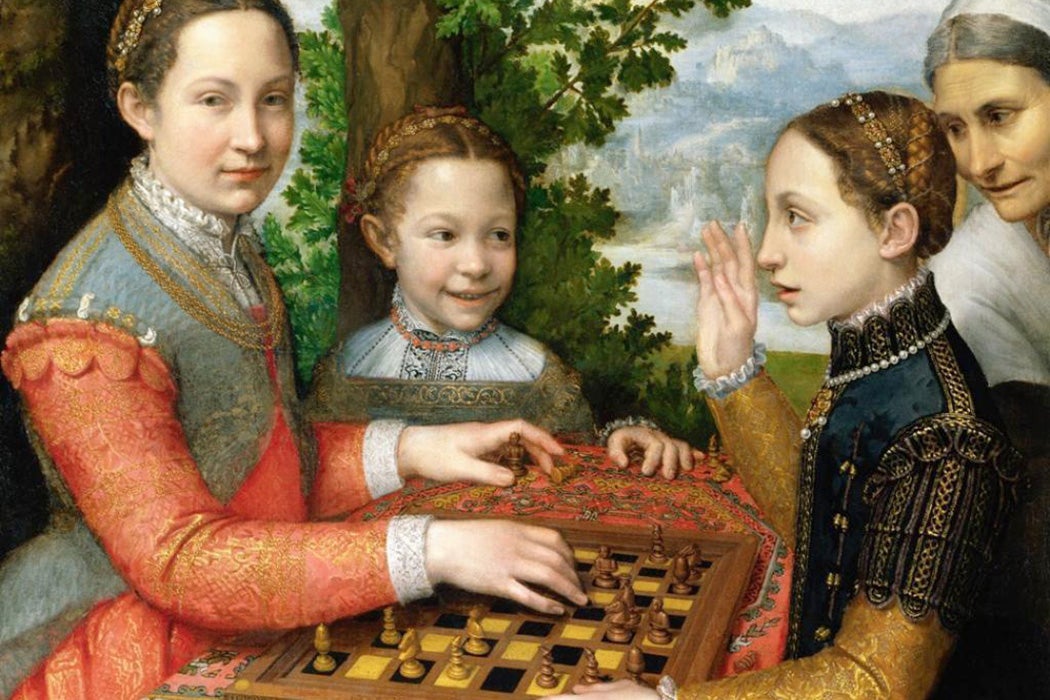Charles Simic, the late, great Serbian-American poet, was born in 1938 in Belgrade, Yugoslavia. In 1941, when Simic was three, Hitler invaded, and a bomb explosion hurled Simic out of bed. Three years later, in 1944, another series of detonations exploded across town—this time, dropped by Allies. Images of a war-torn country inform Simic’s earliest memories. Belgrade had become a chess board, a deadly battleground for both the Nazis and Allies. Simic emigrated as a boy to the United States, and he wrote poetry in English, but the hellish landscape of his youth lay at the heart of his work.
Simic was also a chess prodigy, and the game rewired his brain. As he wrote in the New York Review of Books, “The kinds of poems I write—mostly short and requiring endless tinkering—often recall for me games of chess. They depend for their success on word and image being placed in proper order and their endings must have the inevitability and surprise of an elegantly executed checkmate.” When chess appears in literature, the game typically symbolizes some kind of escape. But for Simic, the chessboard is more tangible than the surreal hellscape around him. If chess is typically the figure, for Simic, it’s the ground: chess is more real than reality.
Chess is an abstract strategy tabletop game, played across a grid, with no hidden information—that is, unlike a card game where other players don’t know what’s in their opponents’ hands, all the components of play are always equally available to both players. The recorded history of chess goes back to the seventh century, when a similar strategy game called chaturanga emerged in India. The chess that we play today arose in Europe in the mid-fifteenth century, and the rules became codified in the mid-nineteenth. As long as people have played chess, it’s also served as an excellent device in literature because it’s a handy allegory for so many aspects of life: for war, for love, for growing up—and perhaps especially, for the art of writing itself.

Chaucer uses chess to animate a dream world. In The Book of the Duchess, one of Chaucer’s earliest works, the narrator has been awake for eight years. To while away the night, he demands that someone bring him Ovid’s Metamorphoses. If he’s going to be awake, he declares, he’d rather engage his mind by reading about tales of kings and queens than to “playen either at ches or tables” (chess or backgammon); he eschews the simple distractions in favor of a conversation across generations. The strategy works, sort of. Reading promptly cures the narrator of his insomnia, as he falls asleep after just one tale. But in his dream, chess comes to life. No longer a lifeless game, chess animates the characters in a stained-glass window. A Black Knight bemoans the loss of his lady love, Whyt, to a game of chess with Fortune. Our literal-minded narrator implores the Knight not to fret over a simple game, not realizing that the Knight is speaking metaphorically: Whyt has gone, and he’s lamenting his lost love. The Knight’s long ode to Whyt dominates nearly the rest of the poem, trapping the narrator in the dream-chess world: the Knight transforms his lady love into a chess piece, therefore rejecting her death, and, in a way, his long poem about her keeps her alive. No longer a static distraction, chess, in the dream, is an allegorical language of love. Although Fortune has “checkmated” Whyt, the Knight can bring her back to a kind of life, as literary critic Jenny Adams points out, when he envisions her as a chess piece, perpetually playing his game.
Whether or not Chaucer actually knew how to play chess, as Margaret Connolly observes, or whether he only knew of it secondhand, is debatable. Yet as Guillemette Bolens and Paul Beekman Taylor argue, the point of chess in the poem isn’t the game itself, but rather its symbolic function. The Knight gets confused about the rules but feels deeply the metaphorical impact of his Queen being taken away from him. Our narrator the dreamer takes the discussion of the game too much to heart, so chess becomes a lesson in literary interpretation.

Chess thrives as both formal and symbolic conceit in the nineteenth and twentieth centuries. Lewis Carroll structures Through the Looking-Glass, the sequel to Alice’s Adventures in Wonderland, as a chess problem. Alice, a famously bored seven-and-a-half-year-old, follows a similar trajectory to Chaucer’s dreamer. While making up stories starring her kitten, Alice falls asleep in a living-room chair and imagines herself traveling through the mirror above the mantlepiece, where she discovers the Looking-Glass world is a giant game of chess. Since chess is a game of no hidden information, Carroll gives the full diagram to the reader in the beginning of the book and announces what moves each side will make. However, Carroll’s also playing games with us, and Alice encounters plenty of characters with hidden agendas along her journey. While the book starts as a chess problem, chess becomes the metaphor guiding Alice’s progression toward adulthood.
Chess might also serve as a horrific nightmare, an inescapable labyrinth. For T.S. Eliot, chess in The Waste Land hearkens to Jacobean dramatist Thomas Middleton’s use of the game as a sign of emotional numbness. In Nabokov’s The Luzhin Defense, the narrator, a chess master, suffers mental breakdowns because of his obsession with the game. Indeed, playing chess and becoming a chess champion often connotes a mismatch between intelligence and maturity. The chess champion is like an etiolated succulent, straining for sunlight and suddenly stretched uncomfortably out of their skin, like Beth Harmon in Walter Tevis’s novel The Queen’s Gambit (and the Netflix adaptation of the same name).
Simic is a poet of extremes, yet never black-and-white thinking. His simple language and flat forms jetpack the reader into astonishment. Though chess underlies Simic’s process, he rarely addresses the subject in the content of his poems. When he does refer to chess explicitly, his use of it underscores his flipped approach to the world.
Weekly Newsletter
Simic’s poem “Prodigy,” from 1977, addresses chess directly. Each stanza is a single sentence––that is, a single chess move––until the penultimate, where the speaker’s mother checks him: “I remember my mother / blindfolding me a lot.” He ducks the period, only to be blindfolded again: “She had a way of tucking my head / suddenly under her overcoat.” The under / over gesture folds the past and the present together. As a child, the speaker only saw the underside of the overcoat coming down to shield his vision. Now, from the vantage point of an adult looking back, he sees the scene in the mother’s eyes, over the coat, to the horrors of war his mother wanted to protect him from seeing.
Chess establishes both the horrors and inanities of war, the life-and-death stakes and battle pride juxtaposed against the cruel banality of innocent lives being surrendered. But chess, unlike war, is a game of perfect information. “In the set we were using,” Simic writes, “the paint had almost chipped off / the black pieces,” rendering the sides nearly indistinguishable from each other. Though the game’s stakes are life and death, the players themselves—the humans on the battlefield—are indistinguishable from each other, brother fighting brother. For Simic, chess is not the symbol but the reality; the world itself is too horrific to be real:
I’m told but do not believe
that that summer I witnessed
men hung from telephone poles.
Simic’s tiny poem “Evening Chess” encapsulates both the urgency and the pain of this game:
The Black Queen raised high
In my father’s angry hand.
Simic was also a prodigious translator, and his description of the Serbian poet Vasko Popa’s process also illustrates the way in which chess is a process: the ability to see all the moves in advance, as a grand master can.
Catherine de’ Medici Was Good at Chess
“Popa himself had already thought out everything he was going to write over the rest of his life,” Simic writes. “Late one night, after much wine, he described his future poems to me in full detail. I assumed that this was just the wine talking, but not so. In the following years, I would see his poems come into print and they were pretty much as he had described them that night.” When reality is too surreal for the imagination to witness, chess is not an artificial escape, but a way of attempting to establish enough of a solid ground to keep living.
Support JSTOR Daily! Join our new membership program on Patreon today.








